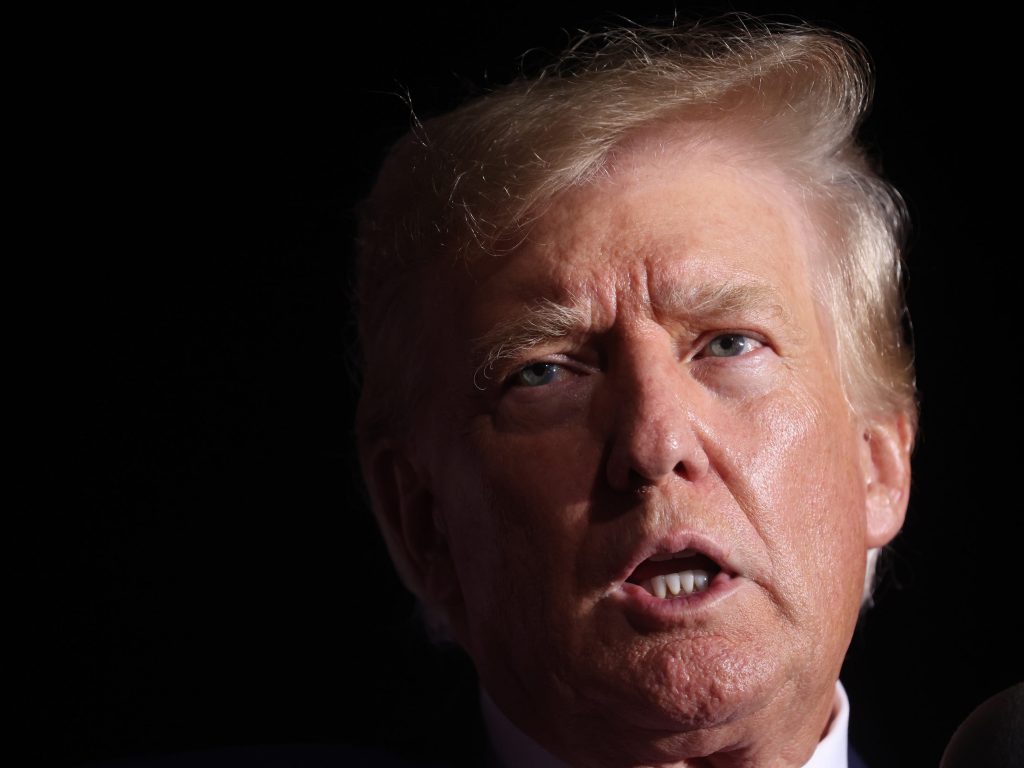- During Monday's search of Donald Trump's office, officials found Confidential, Secret, and Top Secret documents.
- Not everyone can access classified documents, but the President can grant access through executive order.
- Trump could theoretically give Russian President Vladimir Putin a security clearance, a lawyer speculated in 2019.
FBI officials found that Donald Trump had classified documents not meant to be seen by most Americans during a search of the former president's home at the Mar-a-Lago resort in Florida on Monday,
According to the search warrant, unsealed by the Department of Justice and obtained by multiple news outlets on Friday, officials seized 11 sets of documents labeled Confidential, Secret, and Top Secret—the three levels of security for US documents in ascending order of importance and secrecy.
Trump defended himself and said that he declassified the information in the documents or stripped them of their classified status so those without special clearances could view them.
Most officials working with the government must have security clearances as well as a reason to access documents restricted by the government. However, as the president, Trump did not need to pass any security clearances.
In fact, the President, Vice President, members of Congress, Supreme Court justices, and many elected officials are not required to get permission for security clearances of any classified documents as their positions in office mean the American people decided to entrust them with national security secrets, according to a report from the Congressional Research Service.
Generally, US citizens working in the fields of national security, defense, and other sensitive areas of government must go through a security clearance process, which includes an application and a background check, according to the CRS report. The National Background Investigations Bureau must determine whether or not the applicant needs the information specified and whether or not they can be trusted to keep said information a secret.
Agencies like the FBI and the White House Security Office determine who gets clearances within the White House, NPR reported in 2019.
Nearly 3 million government employees and contractors had security clearances and over 1.2 million of those clearances were Top Secret, according to a 2019 report of annual security clearance determinations.
However, a Top Secret clearance does not mean an official has access to all of the government's highest classified information. Among Top Secret clearances are various categories of Sensitive Compartmented Information and Special Access Programs, which is Top Secret information that corresponds to various areas of work in the government or special policies or projects. Officials must be working in a particular field to access those documents and programs.
Compartmented information has been declassified before. In 2010, Former President Barack Obama declassified the number of nuclear warheads in the US stockpile.
Presidents can give clearances, usually through executive order, to staff or anyone in their orbit, even against the wishes of those tasked with granting said clearances. In 2018, Trump ordered that his son-in-law, former senior adviser Jared Kushner, be granted a Top Secret clearance, despite concerns from intelligence officials, The New York Times reported in 2019. Sources told NBC in 2019 that fears over Kushner's family businesses and foreign contacts led the FBI to initially reject his application.
Trump could have theoretically given Russian President Vladimir Putin a security clearance during his time as president, Mark Zaid, a national security lawyer, told NPR in 2019.
